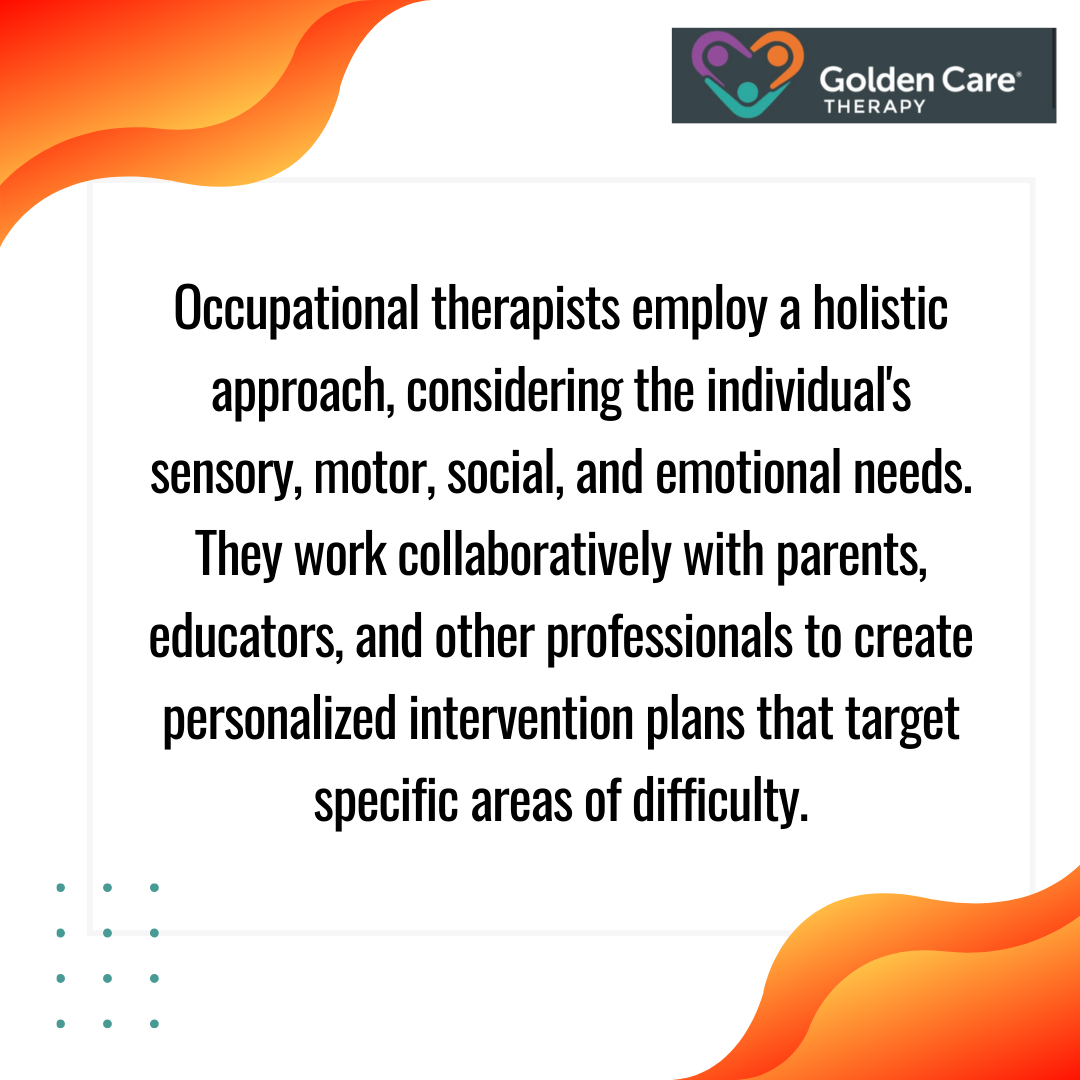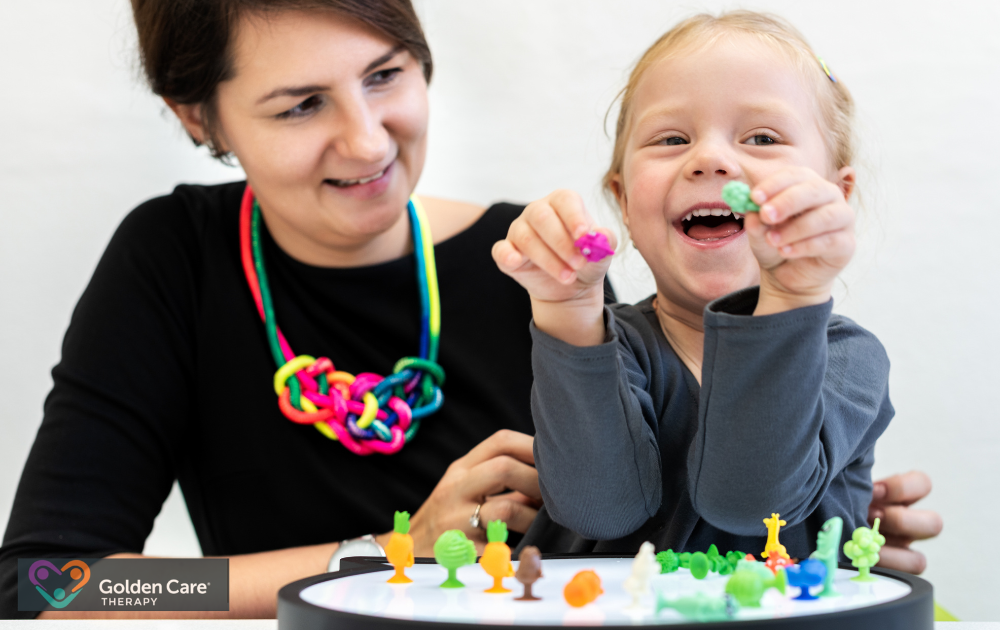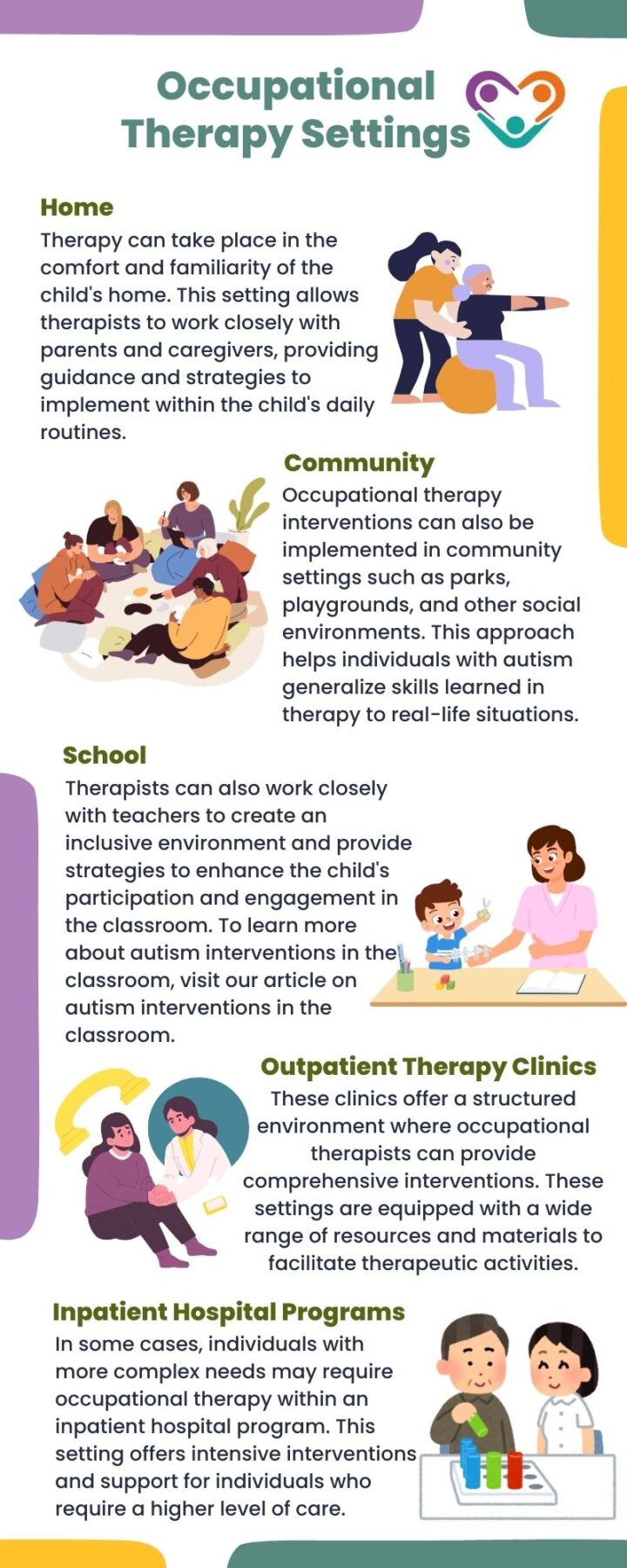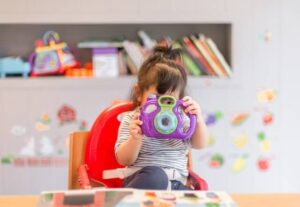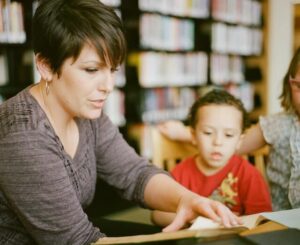Occupational therapists are skilled professionals who specialize in addressing the unique needs of individuals with autism spectrum disorder (ASD). One of the key aspects of their interventions is the incorporation of sensory activities, recognizing the importance of sensory processing in individuals with ASD.
Role of Occupational Therapists
Occupational therapists are trained to assess and address the challenges faced by individuals with autism. They work closely with both children and adults, helping them develop the skills necessary to perform daily activities and participate in meaningful occupations. Through their expertise, occupational therapists aim to enhance overall quality of life for individuals on the autism spectrum.
One of the primary goals of occupational therapy interventions for individuals with autism is to improve sensory processing. Research and clinical observations have shown that many autistic individuals often have co-occurring difficulties with posture, coordination, and motor planning. Occupational therapists provide advice and interventions to target each sense, helping the individual’s nervous system become more organized and regulated. This, in turn, can reduce anxiety and exhaustion while improving attention and performance.
Importance of Sensory Activities
A fundamental aspect of occupational therapy interventions for individuals with autism is the incorporation of sensory activities. A sensory diet, or lifestyle, is a daily activity plan that includes sensory activities tailored to the individual’s needs. The goal of a sensory diet is to improve focus, attention, and ensure regulation throughout the day.
Sensory activities can have both immediate and cumulative effects. Immediate effects refer to the immediate changes in an individual’s regulation and behavior following sensory input. Cumulative effects, on the other hand, involve restructuring the individual’s nervous system over time to be better equipped to tolerate various situations and regulate their sensory needs. This can lead to reduced stress, anxiety, and fatigue.
Occupational therapists often recommend starting the day with a sensory circuit, which is a series of activities designed to wake up all the senses. This helps individuals with autism achieve a “ready to learn” state, making them more regulated, calmer, and focused. By reducing anxiety and increasing opportunities for achievement in overwhelming environments, sensory circuits can have a positive impact on an individual’s overall well-being.
Sensory Diet and Lifestyle
One aspect of occupational therapy interventions is the implementation of a sensory diet and lifestyle, which focuses on enhancing regulation and promoting a balanced sensory experience for individuals on the autism spectrum.
Enhancing Regulation
Research and clinical observations have shown that many individuals with autism, or those with sensory processing differences, often face challenges with posture, coordination, and motor planning. Occupational therapists recognize the importance of addressing these difficulties by providing interventions that target each sense. By doing so, they aim to help the individual’s nervous system become more organized and regulated. This, in turn, can reduce anxiety and exhaustion, while improving attention and overall performance.
A sensory diet/lifestyle is a daily activity plan that incorporates sensory activities strategically throughout the day. The goal is to provide individuals with autism the opportunity to engage in sensory experiences that help regulate their nervous system. By incorporating sensory activities into their daily routine, individuals can improve focus, attention, and overall regulation.
Occupational Therapy Strategies
Occupational therapy plays a vital role in providing effective interventions for individuals with autism spectrum disorder (ASD). This section will explore two key strategies used by occupational therapists to support individuals with autism: sensory circuits and play, self-care, and learning areas.
Sensory Circuits
Occupational therapists often recommend starting the day with a sensory circuit, a series of activities designed to wake up all the senses. This helps children with autism achieve a “ready to learn” state, promoting regulation, calmness, and focus. Sensory circuits aim to reduce anxiety and increase opportunities for achievement, particularly in overwhelming environments.
The activities included in sensory circuits can vary depending on the individual’s sensory needs and preferences. They may involve tactile stimulation, movement-based activities, deep pressure input, and auditory or visual experiences. By engaging the senses in a structured and purposeful manner, sensory circuits help individuals with autism regulate their sensory input and improve their overall functioning.
Play, Self-Care, Learning Areas
Occupational therapy interventions for individuals with autism are child-centered and focus on enhancing strengths while improving skills in areas of weakness. Therapy sessions with an occupational therapist often resemble elaborate play schemes, incorporating elements of play, self-care, and learning/school activities.
During these sessions, the occupational therapist works closely with the individual to address specific goals and challenges. Play-based interventions provide opportunities for the individual to engage in purposeful activities, develop social skills, improve coordination, and enhance problem-solving abilities. Self-care activities help individuals gain independence in tasks such as dressing, grooming, and eating. Learning or school-based activities aim to support academic skills, attention, and organization.
The structure of occupational therapy sessions varies based on the individual’s needs and the therapy location. Treatment may involve a combination of table-top and floor-based play activities, self-help tasks, and a sensory component for individuals on the autism spectrum. The focus is on enhancing participation in educational programs and various activities at school, as well as helping with functioning at home and in the community.
Occupational therapists use a variety of assessment tools, such as autism checklists, sensory profiles, and diagnostic criteria, to evaluate the developmental levels of children and adults with autism. This evaluation process helps identify areas of strength and weakness, informing the design of individualized interventions aimed at enhancing self-regulation of emotions and engagement in social interactions.
Occupational Therapy Sessions
Occupational therapy plays a crucial role in providing effective interventions for individuals with autism. These therapy sessions are tailored to meet the unique needs of each individual and typically follow a child-centered approach. Additionally, therapy can take place in various settings, allowing for flexibility and targeted interventions.
Child-Centered Approach
Occupational therapy sessions for individuals with autism follow a child-centered approach, focusing on the specific needs, strengths, and interests of the child. This approach recognizes that each individual is unique and requires personalized interventions. By understanding the child’s preferences and motivations, occupational therapists can create a supportive and engaging environment that promotes growth and development.
During therapy sessions, occupational therapists use a variety of evidence-based interventions for autism to address specific goals identified for the child. These goals may include enhancing sensory integration, emotional regulation, social skills, and activities of daily living. By centering the therapy around the child and their individual needs, occupational therapists can foster a positive therapeutic relationship and optimize the outcomes of the intervention.
Varied Therapy Settings
Occupational therapy services for children with autism can be provided in a range of settings, allowing for flexibility and comprehensive support. These settings may include:
It’s important to note that the structure and duration of occupational therapy sessions may vary based on individual needs and the chosen therapy setting. The focus is on enhancing participation in educational programs, improving functioning at home and in the community, and building skills that promote independence and a better quality of life.
Occupational therapy professionals, such as licensed occupational therapists (OTs) or certified occupational therapy assistants (COTAs), play a vital role in providing these interventions. They use their expertise and specialized training to evaluate individuals with autism, develop individualized treatment plans, and implement evidence-based interventions to support their overall development.
Occupational Therapy Techniques
Occupational therapy interventions for individuals with autism spectrum disorder (ASD) encompass a range of techniques designed to enhance strengths and improve skills in areas of weakness. These interventions are typically child-centered, focusing on the unique needs and abilities of each individual. Two common techniques used in occupational therapy for autism are table-top and floor activities, as well as the incorporation of sensory components.
Table-Top and Floor Activities
In occupational therapy sessions, table-top and floor activities are often utilized to target specific goals and promote skill development. These activities can include games, puzzles, arts and crafts, and fine motor tasks. Table-top activities provide a structured environment where individuals can work on fine motor skills, hand-eye coordination, and cognitive abilities. These activities may involve tasks such as sorting, stacking, tracing, or manipulating objects.
Floor activities, on the other hand, encourage gross motor skills and overall body movement. These activities can involve crawling, jumping, balancing, and playing with larger objects. By engaging in floor activities, individuals with autism can improve their coordination, body awareness, and spatial skills.
Both table-top and floor activities are carefully selected to address specific sensory needs and developmental goals of individuals with autism. The activities are designed to be engaging, enjoyable, and tailored to the individual’s abilities and interests.
Sensory Components
Sensory integration plays a crucial role in occupational therapy interventions for individuals with autism. Occupational therapists recognize the impact of sensory processing difficulties on daily functioning and aim to address these challenges through sensory-based interventions.
Sensory components are often incorporated into occupational therapy sessions to help individuals with ASD regulate their sensory experiences and improve their ability to process and respond to sensory information. These components can include activities that stimulate various senses, such as touch, sight, sound, smell, and movement.
For example, therapists may introduce sensory materials like textured objects, scented playdough, or auditory games to provide sensory input and promote sensory exploration. These activities help individuals with ASD develop self-regulation, sensory integration skills, and sensory modulation abilities.
By incorporating sensory components into therapy sessions, occupational therapists aim to support individuals with autism in managing their sensory challenges, reducing anxiety, improving attention, and enhancing overall participation in daily activities.
Treatment Structure and Goals
Occupational therapy interventions for children and adults with autism spectrum disorder are child-centered and person-centered, focusing on enhancing strengths and improving skills in areas of weakness. The treatment structure is designed to meet the unique needs and goals of each individual.
During therapy sessions, occupational therapists utilize a variety of techniques and activities to engage individuals with autism and promote their development. These sessions may involve play-based activities, self-help tasks, and learning activities targeting specific skills.
The goals of occupational therapy interventions for autism vary depending on the individual’s age, abilities, and specific challenges. Some common goals may include:
- Enhancing sensory processing and regulation skills
- Improving fine and gross motor skills
- Developing self-care and daily living skills
- Enhancing social skills and participation
- Promoting independence and functional abilities in school, home, and community settings
Treatment progress is regularly assessed and monitored to ensure that therapy interventions are effective and meet the individual’s needs. Occupational therapists work collaboratively with the individual, their families, and other professionals involved to ensure a comprehensive and coordinated approach to intervention.
By working with licensed occupational therapists, individuals with autism can receive the specialized support they need to navigate daily challenges, develop essential skills, and lead fulfilling lives. These professionals play a crucial role in empowering individuals with autism and helping them achieve their full potential.
Sources:
- https://www.research.chop.edu/car-autism-roadmap/occupational-therapy-for-children-with-asd
- https://www.autism.org.uk/advice-and-guidance/professional-practice/occupation-therapy
- https://www.usa.edu/blog/occupational-therapy-for-autism/#:~:text=Common%20Occupational%20Therapy%20Interventions%20for%20Autism&text=Focusing%20on%20sensory%20integration%20and,social%20participation%2C%20and%20play%20activities.


